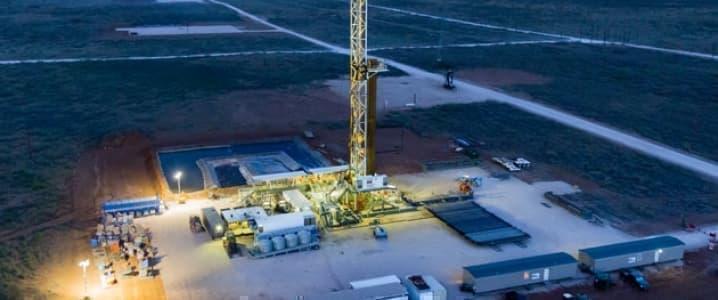You’re Footing The Bill For Bankrupt Shale Driller
Authored by Nick Cunningham via OilPrice.com,
A wave of oil and gas wells abandoned by bankrupted drillers could cost the U.S. government hundreds of millions of dollars.
A new report from the U.S. Government Accountability Office (GAO) studied oil and gas wells drilled on federal lands, and found that the public could get stuck with a significant tab from companies that go out of business.
Inactive wells that have not been properly plugged present environmental threats, from methane leaks to surface, air and groundwater contamination. Reclaiming a well that goes offline involves plugging it, removing structures and revegetating that landscape.
On federal lands, the Bureau of Land Management (BLM) collects a bond upfront that can be returned to a driller after reclamation. If the well is not properly reclaimed at the end of its life, BLM uses the bond to pay for the cleanup.
But the problem is that the bond payments are often too low to cover the cost of reclamation. BLM regulations have minimum bond rates at $10,000 per lease, $25,000 for all wells in a state and $150,000 for all wells nationwide.
When a company abandons a well because it cannot afford to clean it up, the well becomes “orphaned,” and tends to fall to BLM. But the agency does not have the funds to handle a wave of orphaned wells because the bonds that drillers pay are too low. “Bonds held by BLM have not provided sufficient financial assurance to prevent orphaned oil and gas wells,” the GAO report found. For instance, GAO identified 89 new orphaned wells between July 2017 and April 2019, which could cost as much as $46 million to clean up.
More eye-opening was the fact that the agency identified nearly 3,000 wells that are at risk of becoming orphaned. Costs for reclaiming old wells vary widely, so much so that the GAO offered two scenarios: low-cost wells can cost $20,000 a piece, while high-costs wells can reach $145,000. For those 3,000 at-risk wells, the cleanup tab for the federal government could range from $46 million to $333 million.
Roughly 84 percent of bonds are likely too low to reclaim the wells to which they are linked. “Bonds generally do not reflect reclamation costs because most bonds are set at their regulatory minimum values, and these minimums have not been adjusted since the 1950s and 1960s to account for inflation,” GAO said. It can also be decades between when a bond is paid and reclamation is actually completed. Notably, the average bond that BLM has on hand has declined over the years on a per-well basis, from $2,207 per well in 2008 to $2,122 per well in 2018.
This may seem like a rather arcane problem, but it is significant for two reasons.
First, the number of shale wells have proliferated in recent years, drilled at ever-increasing depths, which makes reclamation pricier.
Second, the shale industry is indebted and the financial foundation could begin to crumble, leaving a growing mountain of orphaned wells for the government as companies go out of business. Already more than 190 shale E&Ps have gone bankrupt since 2015.
“I talk to those guys, all the fracking companies, on a daily basis. I’m very engaged in what they are doing with their business, and I completely believe that the current model is unsustainable,” Scott Forbes, vice president of the Lower 48 for Wood Mackenzie, told E&E News.
It is because of this heightened financial stress that concerns over a wave of orphaned wells are rising. As E&E News notes, New Mexico requires a bond of $250,000 for companies with over 100 wells, which only translates into $2,500 per well at best, a paltry figure compared to reclamation costs.
Ultimately, if the full cost of reclamation was required upfront, there could be a lot less drilling.
The GAO report came at the request of Rep. Raul Grijalva (D-NM) and Rep. Alan Lowenthal (D-CA), both of which come from states with abandoned wells. “The oil and gas industry’s boom-and-bust cycles can lead operators to drill wells when prices for oil and gas are high but can contribute to bankruptcies when prices are low,” the GAO wrote in a letter to the congressmen that accompanied the report.
GAO recommended the U.S. Congress grant BLM the authority to obtain funds from drillers to reclaim orphaned wells while also requiring the agency to develop a mechanism to do so. It also said that BLM should hike bond rates to reflect actual costs of cleanup.
Rep. Lowenthal introduced a bill last week that increased the minimum bond payment for federal lands.
Tyler Durden
Fri, 09/27/2019 – 09:55
via ZeroHedge News https://ift.tt/2lHNgDc Tyler Durden
